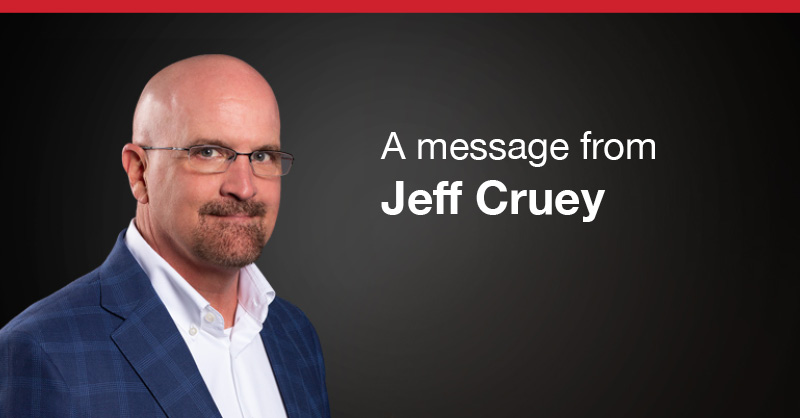From the Executive Desk

To our AgriBusiness® Producers:
First, thank you for continuing to support our Equine Farm Team with your business. We appreciate the opportunity to be a valuable service to you and your policyholders.
Secondly, I want to address an area that is a concern for all of us and that is the continued pressure on the price of building materials and the overall cost of construction. Inflation is a term all of us have been exposed to in the past. Now we have a new buzz term called “supply chain disruption” which is carrying much of the blame for demand exceeding supply, leading to a shortage in building materials, appliances, contractors and the overall cost of construction spiraling to record highs. In February 2022, the Associated General Contractors of America stated that overall costs of building materials increased more than 20% from January 2021 to January 2022. Fears of price inflation continue today and the price of raw materials in March 2022 was the highest in the last six months. The Associated Builders and Contractors Association recently projected that the construction industry will need to attract about 650,000 additional workers in 2022 to keep pace with construction demand. A survey by the U.S. Chamber of Commerce in December 2021 showed that 91% of contractors report moderate to high levels of difficulty finding skilled labor and 45% of contractors reported turning down jobs due to a lack of workers. Attracting new workers to the construction industry will require offering competitive wages and benefits, adding to the costs of construction services.
From an insurance perspective, we are seeing the impact of the increased costs of construction putting more policyholders at risk for an insurance to value problem when adjusting a claim. In addition, the shortage of skilled contractors often causes a delay in getting the damaged property rebuilt or repaired, resulting in frustration for everyone. Fixing the contractor shortage problem is a challenge for the construction industry. However, we can address the need for adequate insurance to value for buildings and structures at the time of the loss.
Underinsurance is something we never want to discuss at the time of a loss since the odds are a policyholder will be faced with a coinsurance penalty and/or not receiving the funds needed to rebuild the property as it was prior to the loss. Do not quote me on the specifics of all farm property coverage forms but in general, unless the policyholder has the building or structure insured for a least 80% of the building or structure’s replacement cost, the policyholder is looking at a settlement based on actual cash value and/or possible coinsurance penalty. No one wants to be told that they must use 20% or more out of personal funds to rebuild in the event of a total loss or on a partial loss that they will receive less than the estimated repairs due to a coinsurance penalty. Insuring a structure below 80% or on an actual cash value basis makes sense for older dwellings and barns where a policyholder does not expect to rebuild the structure, as is, in the event of a partial or total loss. For newer and/or updated buildings and structures, policyholders expect to be compensated appropriately to make the needed repairs or rebuild.
Our underwriters are making a concentrated effort on new and renewal business to ensure buildings or structures we insure have adequate insurance to value. In fact, in 2021 we started increasing dwelling values at renewal by 7% and in some areas of the country, we are also automatically increasing values on barns, at renewal, by a specified percentage. However, getting increases on property values at renewal will not be of much help if the building or structure was underinsured when first written. We appreciate your continued focus on ensuring we have structures insured to value when the risk is first submitted to our Underwriting staff. We do offer access to our E2 Insurance to Value product through our agency portal and if you have another product you prefer to use for the insurance to value calculation, that is OK as well. The most important thing is to complete an insurance to value projection prior to submitting an account and it will go a long way in expediting the quoting or issuance phase and cut down on correspondence with the underwriter. If anyone needs assistance with our E2 Value product, contact your underwriter and we will be happy to provide a demonstration.
One other tip, consider adding our extended replacement cost option to the policy. The extended replacement cost provides a 125% increase (or 150% increase if selected) to the dwelling limit at the time of the loss. This endorsement is not designed to compensate for an underinsured dwelling and in fact, it requires that the dwelling be insured for 100% replacement cost to be eligible for the option. However, the extended replacement cost option is a great hedge for any discrepancies in the tool used to evaluate the insured value for the dwelling, as well as any increased costs of construction that may arise due to inflation in the policy year or in a case where a catastrophe has caused a demand surge in construction costs. It is important to note that this option is not available for any structures other than dwelling. In addition, the extended replacement cost option may not be available in some areas of the country and it is important to contact your underwriter to discuss its availability.
If you have any questions on the topic of insurance to value, please reach out to your underwriter.
Thanks,
Jeff Cruey
Divisional President, AgriBusiness®